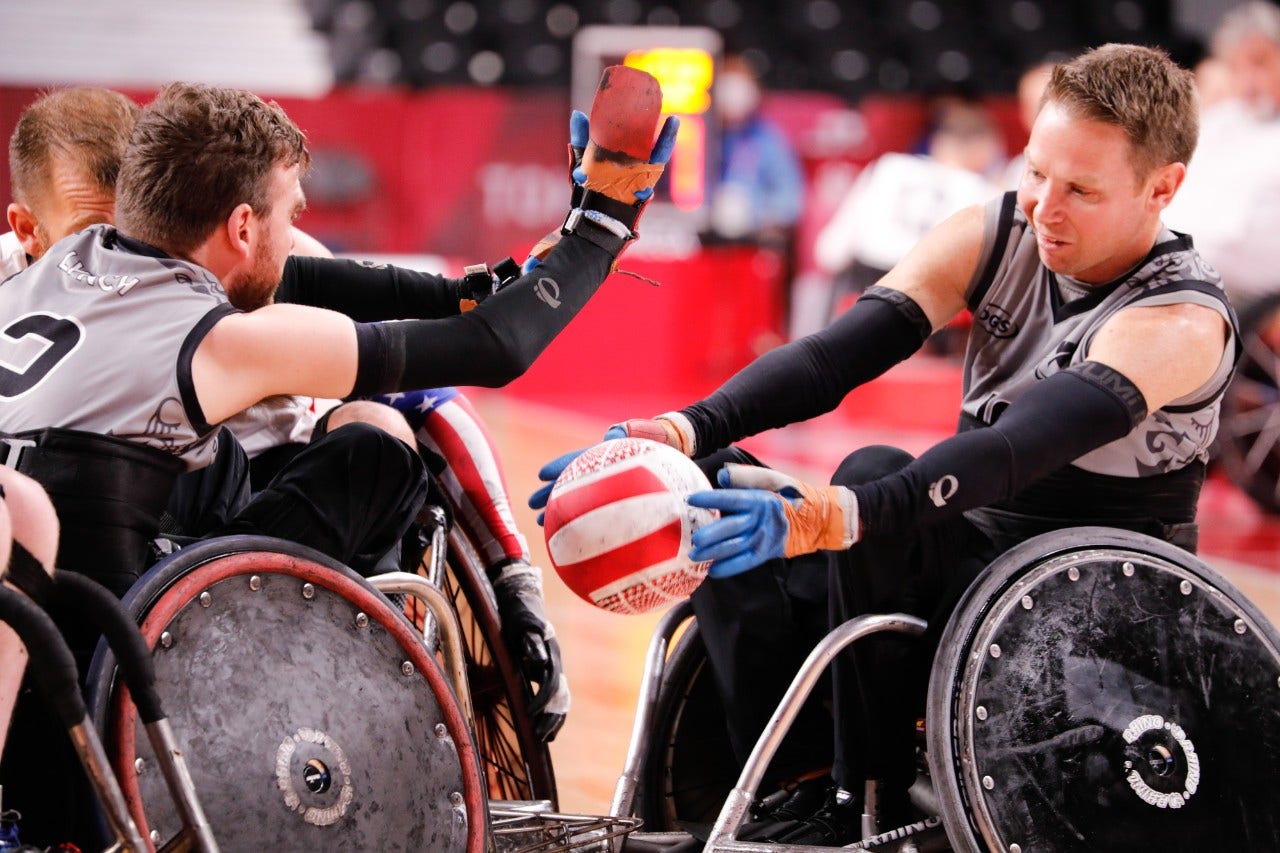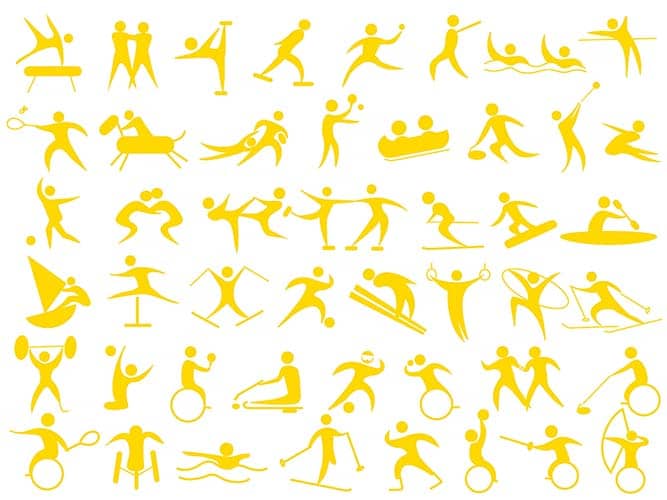
Adaptive Sports: Wheelchair Basketball
Wheelchair basketball was first played in Veterans Administration (VA) hospitals in 1946. Recovering from varying levels of paralysis, World War II Veterans would compete against the doctors who treated their injuries. Within two years of the sport's inception, six teams formed, representing VA hospitals nationwide. Paralyzed Veterans of America (PVA) organized national wheelchair basketball tournaments to promote the sport.
When Did Wheelchair Basketball Start?
The University of Illinois holds a significant place in disability history, including the history of wheelchair basketball. Not only is the university considered to be one of the most accessible college campuses in the U.S., but it's also home to the first collegiate wheelchair basketball team. In 1948, Tim Nugent, an alum of the university, established the National Wheelchair Basketball Association (NWBA) and organized the annual National Wheelchair Basketball Tournament (NWBT). By 1960, Men's wheelchair basketball became a Paralympic sport, with women's wheelchair basketball following later, in 1968.
What Are Wheelchair Basketball Rules?
The National Wheelchair Basketball Association (NWBA) hosts and manages major events and championships within the U.S., but it's the International Wheelchair Basketball Federation (IWBF) that serves as the governing body, setting rules for the sport. NWBA players who compete in the Paralympics adhere to the rules set by the IWBF. The International Paralympic Committee (IPC) recognizes IWBF rules, while overseeing Paralympic-specific events. Despite having multiple organizations overseeing the sport, the basic rules of wheelchair basketball are largely the same as those in standing basketball, with the major exception being the use of wheelchairs. Both sports require skillful gameplay, and referees are utilized to address any rule violations.
How Is Wheelchair Basketball Different from Standing Basketball?
Wheelchair basketball and able-bodied basketball have more similarities than differences, with a few exceptions to accommodate athletes with disabilities.
Key Similarities:
- Hoop Height: Despite common misconceptions, the basketball hoop remains at the standard height of 10 feet in both standing and wheelchair basketball.
- Court Size: Players use the same size court in both games. The same is true for other para sports too, like wheelchair tennis. Some sports, however, like sitting volleyball, are played on a smaller court.
- Number of Players: Both standing and wheelchair basketball allow five players per team on the court during gameplay.
- Scoring: Scoring follows the same format, with two-pointers, three-pointers, and free throws. There are no special throws for extra points in either game. The team with the most points at the end of a game wins. If tied, either game would go into overtime.
Key Differences:
- Traveling: Rules against traveling exist in both sports, and are somewhat similar: in standing basketball, a player must dribble, pass, or shoot after two steps. In wheelchair basketball, this number of steps simply translates to pushes of a wheelchair.
- Timing: Wheelchair basketball games are slightly more fast-paced. quarters are 10 minutes long, compared to 12 minutes in standing basketball, making wheelchair basketball games slightly shorter, not accounting for overtime.
- Classification: Wheelchair basketball uses a classification system to ensure fair competition. Players are assigned point values based on their abilities, and teams must not exceed a total point cap. This system ensures no team has an unfair advantage and is also used in other adaptive sports like wheelchair rugby and goalball.
Can a Person without a Disability Play Wheelchair Basketball?
Professional wheelchair basketball is reserved for athletes with mobility impairments. This can include but is not limited to, people with limb differences, neuromuscular disabilities, or paralysis. Athletes compete in tournaments and championships throughout the year, with some continuing to the Paralympics. Those with disabilities looking to get involved with an NWBA-recognized team can find a team on the National Wheelchair Basketball Association website. People without disabilities may be able to participate in wheelchair basketball through local recreational programs and adaptive sports organizations.
Paralympic Wheelchair Basketball Player: Steve Serio
As previously mentioned, the University of Illinois has been instrumental in advancing wheelchair basketball, producing many Paralympians, including Steve Serio, a friend of BraunAbility. Born with a benign spinal tumor, Serio lives with incomplete paralysis of his lower extremities.
As a child, he played sports with his non-disabled friends. In middle school, although he made the school's baseball team, the school board cited safety concerns for Serio and other players due to his disability. This not only led him to stop playing baseball, but he began to feel insecure about his disability, too. Eventually, Serio discovered wheelchair basketball, thanks to the persistent encouragement of a physical therapist. Initially hesitant, Serio found joy in playing an adaptive sport—not needing rule modifications to meet his needs or feeling like he had to hide his disability.
When visiting BraunAbility, Serio shared about how his journey with wheelchair basketball mirrors his views on wheelchair accessible vehicles. Just like adaptive sports, Serio believes wheelchair accessible vehicles empower individuals with disabilities to live life to the fullest.
After joining Team USA in 2006, Serio competed in five subsequent Paralympic Games and is now a 3x Paralympic gold medalist. Retired from the sport, he envisions his future BraunAbility vehicle — one with a neon yellow ramp which has Spotify connectivity — a future where disability is celebrated loud and proud.
We're always driving innovation and working on new vehicle features, but in the meantime, while we're working on that neon yellow ramp with Spotify connectivity, you can visit your local BraunAbility dealer to check out our current lineup of wheelchair accessible vehicles. Plus, in the accessible living section of our article library, you'll find our adaptive sports series.




